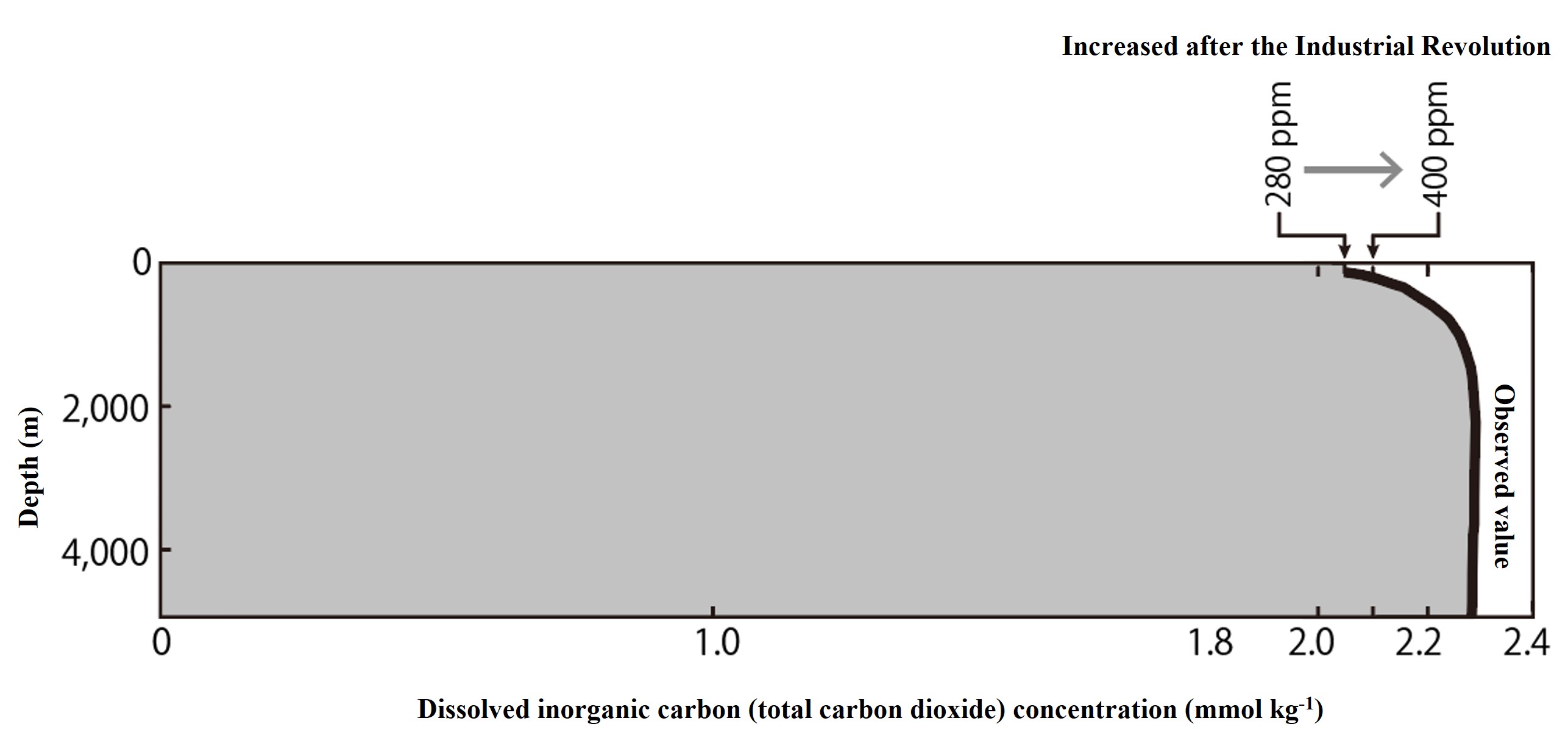Vertical distribution of carbon dioxide in the ocean
As an oceanographer, you must answer the question, how much carbon dioxide is sequestered in the ocean? We also want to know how much human-emitted carbon dioxide is sequestered at deeper layers. However, since carbon dioxide is not colored to identify its source, it is quite difficult to determine the percentage of the carbon dioxide sequestered in the deep ocean that is of human origin. In this lesson, we will try to understand the distribution of carbon dioxide without coloring it human origin. (We will only illustrate the destination of human origin carbon dioxide with an image of where it goes)
The vertical distribution of the concentration of total carbonic acid (the carbonic acid component in dissociative equilibrium with carbon dioxide) in seawater is shown below. No human-derived color or any other color is added. This vertical distribution shows that the concentration is low near the surface, rises sharply from the surface to a depth of 1,000 m, and remains constant at a high concentration toward the deeper layers. This is the average concentration distribution of carbon dioxide in the entire ocean. First, let us note this shape well. Then, think for a moment about why it looks this way, and you'll see three or so contributing factors.
Figure shows the observed data used in the carbon transport model in Murnane et al., Global Biogeochemical cycles, 13(2), 287-305, (1999). It is an average of observations made in oceans around the world.

